Additional notes (click to expand)
Commemorative
Achilles (circa 1,200 BC). Almost invulnerable Greek warrior in Homer’s Iliad (800 BC), killed in the Trojan War by an arrow in his heel, used this plant for healing wounds.
Oakeley, Dr. Henry. (2012). Doctors in the Medicinal Garden. Plants named after physicians. Royal College of Physicians. p.11
link
Medicinal
Millefolium. Yarrow... an healing herb for wounds, stauncheth bleeding; and some say the juice snuffed up the nose causeth it to bleed, whence it was called Nose-bleed; it stoppeth Lasks, and the Terms in women, helps the running of the reins [= kidneys], helps inflammations and excoriations of the Yard, as also inflammations of wounds.’
Culpeper, Nicholas. (1650). A Physical Directory . London, Peter Cole.
The hairy leaves are likely to promote blood clotting when applied to bleeding surfaces. However, they contain sesquiterpene lactones that may be allergenic and cause dermatitis; should be avoided in pregnancy (MCA, 2002).
Medicines and Health Care Regulatory Agency , MCA. (2002). Medicines and Health Care Regulatory Agency (MHRA) for restricted or prohibited herbal medicines. Medicines and Health Care Regulatory Agency .
link
Traditional Herbal Medicine Registration (THMR).
Medicinal uses
Uses supported by clinical data
None.
Uses described in pharmacopoeias and well established documents
Orally for loss of appetite, common cold, dyspeptic ailments such as mild
spastic discomfort of the gastrointestinal tract, as a choleretic and for the
treatment of fevers (6, 12, 16). Externally for skin inflammation and
wounds (6).
Externally as a sitz bath for treatment of painful, cramp-like conditions
due to menstrual disorders (12).
Uses described in traditional medicine
Orally as an emmenagogue, eyewash, haemostat, laxative, sleep aid, stimulant
tonic, and to treat baldness, prostatitis and vertigo (8, 9, 15, 17, 18).
Used externally for the treatment of haemorrhoids, haematoma and
burn injuries (19).
From WHO Monographs on Selected Medicinal Plants Vol 4 2005, WHO Geneva
Contraindications
Hypersensitivity to the plant and other Asteraceae (Compositae) (12, 40, 41).
Gastric and duodenal ulcer, occlusion of the bile duct and gallbladder disease
(12).
Due to the traditional use of the drug as an emmenagogue, it is
contraindicated during pregnancy (9).
From WHO Monographs on Selected Medicinal Plants Vol 4 2005, WHO Geneva
Medicinal uses
Uses supported by clinical data
None.Uses described in pharmacopoeias and well established documents
Orally for loss of appetite, common cold, dyspeptic ailments such as mild
spastic discomfort of the gastrointestinal tract, as a choleretic and for the
treatment of fevers (6, 12, 16). Externally for skin infl ammation and
wounds (6).
Externally as a sitz bath for treatment of painful, cramp-like conditions
due to menstrual disorders (12).
Uses described in traditional medicine
Orally as an emmenagogue, eyewash, haemostat, laxative, sleep aid, stimulant
tonic, and to treat baldness, prostatitis and vertigo (8, 9, 15, 17, 18).
Used externally for the treatment of haemorrhoids, haematoma and
burn injuries (19).
Contraindications
Hypersensitivity to the plant and other Asteraceae (Compositae) (12, 40, 41).
Gastric and duodenal ulcer, occlusion of the bile duct and gallbladder disease
(12).
Due to the traditional use of the drug as an emmenagogue, it is
contraindicated during pregnancy (9).
WHO monographs on medicinal plants commonly used in the Newly Independent States (NIS). 2010. WHO, Geneva
Nomenclature
Soldier’s Wound wort, Achilles woundwort, Sanguinary, Millefolium, Yarrow.
Oakeley, Dr. H. F. (2013). The Gardens of the Pharmacopoeia Londinensis.
Other use
Yarrow or sneezewort, the latter because ground up it made a snuff to induce sneezing. Evergreen, herbaceous perennial. Distribution: Europe, Asia and North America. Dioscorides calls it Achilles’ woundwort, sideritis, writing that the ground-up foliage closes bleeding wounds, relieves inflammation and stops uterine bleeding. Gerard's herbal of 1633 says that put up one’s nose it causes a nosebleed and so stops migraines. Named for the Greek warrior, Achilles, who used this plant for healing wounds – having been taught its properties by his teacher, Chiron the centaur. Millefolium because of the thousands of fronds that make up the leaf, and which, when applied to a bleeding wound, facilitate coagulation by platelets.
Oakeley, Dr. Henry F. (2013). Wellcome Library notes.
link
Geographical distribution
- Asia-Temperate
- Asia-Tropical
- Europe
- Northern America
- Southern America
Podcast
Achillea millefolium L.
Family: ASTERACEAEGenus: Achillea
Species: millefolium L.
Common names: Yarrow
Pharmacopoeia Londinensis name: Millefolium
Distribution summary: Europe to W.Asia
Habit: Perennial
Hardiness: H5 - Hardy; cold winter
Habitat: Grassy sites:meadows, pastures, roadsides & gardens
Garden status: Currently grown
Garden location: Europe & Middle East (J), Pharmacopoeia Londinensis 1618 'Leaves' (HSE 5), Plane tree bed (P)
Reason for growing: Commemorative, medicinal, traditional herbal registration
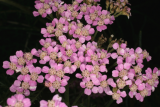
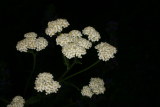
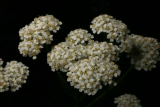

.JPG)
.JPG)
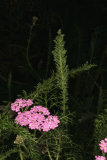
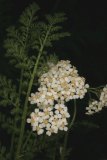

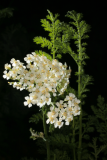
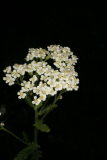
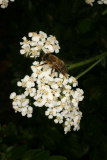
.JPG)
.JPG)
.JPG)
.JPG)
.JPG)
.JPG)